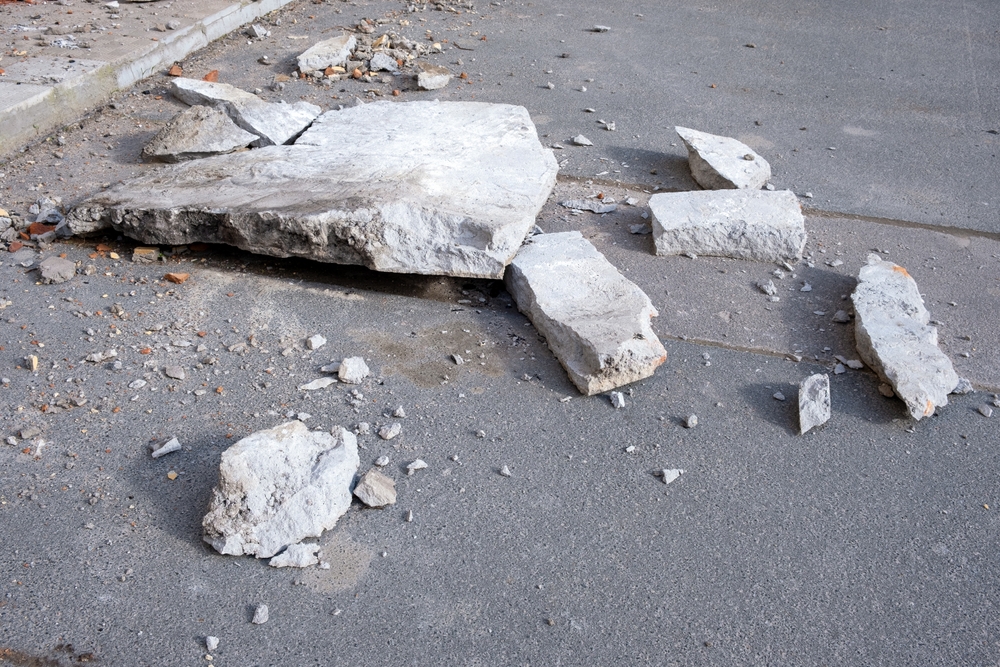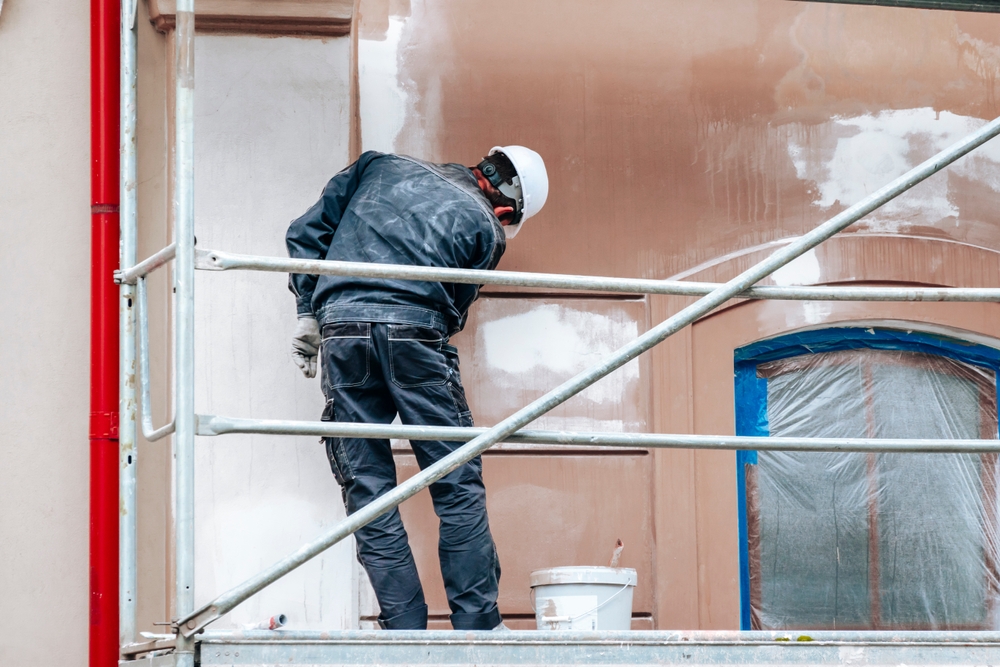May 2, 2024 - Benjamin Ehinger
Will Paint Thinner Evaporate? Understanding Its Volatile Properties
CALL NOW 844-762-8449
When faced with the question of whether paint thinner will evaporate, the answer lies in understanding its composition. Paint thinner is a solvent used to dissolve oil-based paints and ease the application or clean-up process. Comprised of chemicals like turpentine, acetone, and mineral spirits, these solvents have the characteristic trait of transitioning from liquid to gas at room temperature, which means under normal conditions, they do indeed evaporate.
The evaporation rate of paint thinner is influenced by several variables, including the type of solvent, its purity, and environmental conditions like temperature and air flow. Most paint thinners are designed to evaporate relatively quickly, which helps with the drying time of oil-based painted surfaces. However, your safety should always be a priority when using these products, as they are highly flammable and can release harmful fumes. Proper storage and disposal are essential to minimize any adverse environmental impact.
 Understanding the composition and properties of paint thinner is crucial as it affects your use of the product, including the control of drying times, potential health hazards, and the ideal application scenario.
Understanding the composition and properties of paint thinner is crucial as it affects your use of the product, including the control of drying times, potential health hazards, and the ideal application scenario.
 Understanding how to use paint thinner correctly ensures optimal results in your painting projects and the longevity of your equipment. Knowing when and how to thin paint for different applications, as well as the best ways to clean brushes and equipment, can significantly enhance the quality and efficiency of your work.
Understanding how to use paint thinner correctly ensures optimal results in your painting projects and the longevity of your equipment. Knowing when and how to thin paint for different applications, as well as the best ways to clean brushes and equipment, can significantly enhance the quality and efficiency of your work.
Key Takeaways
- Paint thinner, composed of various solvents, is designed to evaporate.
- The evaporation rate is affected by the type of thinner and environmental conditions.
- Handle and dispose of paint thinner safely to avoid health and environmental risks.
Composition and Properties of Paint Thinner
 Understanding the composition and properties of paint thinner is crucial as it affects your use of the product, including the control of drying times, potential health hazards, and the ideal application scenario.
Understanding the composition and properties of paint thinner is crucial as it affects your use of the product, including the control of drying times, potential health hazards, and the ideal application scenario.
Types of Thinners and Their Solvents
Paint thinners typically consist of a variety of solvents to dissolve or dilute paint. Commonly, mineral spirits are a major component in paint thinners, prized for their balance between evaporation rate and solvent power. Turpentine, distilled from pine trees, used to be a standard, though it has a stronger odor and is less commonly used now. Other solvents found in paint thinners can include:- Acetone, known for its fast evaporation and strong dissolving capacity, often used for lacquers and epoxies.
- Toluene and xylene, potent solvents with quick evaporation characteristics that work well for certain adhesives and heavy-duty paint coatings.
- Naphtha, which is typically a faster-evaporating solvent than mineral spirits, useful for thinning oils and enamels.
Chemical Characteristics and Viscosity
The chemical make-up of paint thinners dictates their properties and viscosity. The properties of a thinner determine its compatibility with different types of paint, its rate of evaporation, and its ability to clean or dilute paint effectively. Thinner solvents with lower viscosity, such as acetone or naptha, will generally have a faster drying time due to rapid evaporation. This can be advantageous when quick drying is necessary, but can also be a drawback if too fast of a dry time leads to imperfections in the finish. In contrast, solvents with higher viscosity, such as some mineral spirits, offer more extended working times due to slower evaporation rates. This can be especially helpful when working on complex pieces where a fast dry could compromise the quality of the work. It’s important to note that although mineral spirits and certain types of naphtha might have similar functional uses, their chemical characteristics differ. Mineral spirits typically have a milder odor and less toxicity compared to the more volatile compounds like toluene and xylene, making them a preferred option for indoor use. Always use paint thinners in a well-ventilated space to minimize inhalation of fumes, regardless of the solvent’s odor or toxicity level.Safety Measures and Proper Handling
When dealing with paint thinner, your safety hinges on using Personal Protective Equipment (PPE), ensuring Safe Storage and Ventilation, and adhering to proper Hazardous Waste Disposal protocols. Each step is critical to prevent skin irritation, respiratory issues, and minimize fire hazards.Personal Protective Equipment
For your protection, always wear safety goggles, rubber gloves, a long-sleeve shirt, long pants, and closed-toe shoes to prevent skin contact and eye irritation. Breathing protection is paramount — utilize a mask or respirator to safeguard your respiratory health from harmful fumes.Safe Storage and Ventilation
Store paint thinner in a cool, dry place away from heat sources to reduce the risk of flammable substance ignition. Always refer to the Safety Data Sheet (SDS) for specific storage guidelines. Ensure ventilation in your work area is adequate; open windows or doors to maintain good air circulation, thus preventing accumulation of toxic fumes.Hazardous Waste Disposal
Dispose of solvent-contaminated rags and paint thinner in accordance with local regulations to prevent fire hazards. Utilize an appropriate, firmly closed container for disposal to avoid spontaneous combustion. Check with local waste management services for the correct disposal procedures to ensure you’re not causing environmental harm.Practical Uses and Techniques
 Understanding how to use paint thinner correctly ensures optimal results in your painting projects and the longevity of your equipment. Knowing when and how to thin paint for different applications, as well as the best ways to clean brushes and equipment, can significantly enhance the quality and efficiency of your work.
Understanding how to use paint thinner correctly ensures optimal results in your painting projects and the longevity of your equipment. Knowing when and how to thin paint for different applications, as well as the best ways to clean brushes and equipment, can significantly enhance the quality and efficiency of your work.
Thinning Paint for Different Applications
When thinning paint, your goal is to achieve the right consistency for the job at hand. For spraying applications, you’ll want a runnier mixture, which will pass smoothly through the sprayer’s nozzle. Rollers and brushes, on the other hand, require thicker paint to avoid drips and ensure even coverage. Take care to add paint thinner sparingly, as too much can affect the paint’s color and drying time.- Oil-based Paints: Use solvents like turpentine or mineral spirits.
- Enamel Paints: Suitable thinners include naphtha, toluene, or xylene for a quicker drying time as noted in Practical Machinist.
Cleaning Brushes and Equipment
After finishing your painting task, clean your tools promptly to maintain their condition. For brushes and rollers caked in oil-based paints, soak them in a container with paint thinner. Remove the equipment from the solvent once the paint begins to dissolve and rinse with soap and water. Properly storing paint thinner after use involves sealing the container tightly to prevent evaporation and using a designated storage area that’s cool and dry to minimize the risk of flammability.- Brush cleaning steps:
- Wipe excess paint using a rag.
- Soak in paint thinner for several minutes.
- Wash with soap and water and rinse thoroughly.
- Shake off excess water and shape the bristles before leaving to dry.
Disposal and Environmental Considerations
When dealing with paint thinner, it’s crucial to handle the substance with care, considering both proper disposal methods and the implications for health and the environment.Proper Disposal of Paint Thinner
To avoid environmental damage and potential health risks, you must dispose of paint thinner as hazardous waste. Never pour paint thinner down the drain or into the ground. This can contaminate the water supply and cause harm to the ecosystem. In the context of safe disposal, locate a local hazardous waste disposal facility that accepts paint thinners. For temporary storage, ensure you use a suitable container that is airtight to prevent the escape of harmful fumes into your room. Be mindful of the drying time and tackiness; sealed containers can control evaporation rates, reducing the odor and potential for skin contact.Impact on Health and Environment
Paint thinner is classified as a toxic substance, and improper handling can lead to serious consequences. Direct skin contact may result in redness and irritation. Inhalation of fumes may cause respiratory issues, necessitating the importance of conducting cleanup in a well-ventilated area. Be conscious of the health and safety considerations related to the usage of paint thinners to minimize the risk of health complications. Additionally, when exposed to the environment, chemicals in paint thinners can contaminate soil and water sources, posing a risk to wildlife and contributing to pollution. Always follow your local regulations on toxic waste disposal to mitigate environmental impact.Frequently Asked Questions
Paint thinners are commonly used in various applications and understanding how they behave during and after use is important. Here are some specific answers to common inquiries about the evaporation of paint thinner.How long does it typically take for paint thinner to evaporate?
The time it takes for paint thinner to evaporate can vary greatly depending on factors such as the amount used, ventilation, temperature, and humidity. It could take anywhere from a few hours to several days.Can paint thinner effectively evaporate from a wooden surface?
Paint thinner can evaporate from a wooden surface, but the rate of evaporation might be slower compared to non-porous surfaces due to the absorption of the solvent into the wood.What are the risks of pouring paint thinner down a household drain?
Pouring paint thinner down a household drain can pose significant risks, including damage to plumbing systems, environmental pollution, and potential harm to water treatment facilities and aquatic life.What is the evaporation rate of lacquer thinner compared to other solvents?
Lacquer thinner typically evaporates faster than other common solvents due to its higher volatility and lower boiling point.What is the recommended method for disposing of used paint thinner?
The recommended method is to allow paint thinner to evaporate in a well-ventilated area away from ignition sources or to take it to a hazardous waste disposal facility.How can the residual odor from paint thinner be mitigated in an indoor environment?
To mitigate the residual odor from paint thinner, ensure good ventilation by opening windows and using fans, and consider using odor absorbers such as activated charcoal or baking soda.RECENT BLOGS
Our Reviews
Glenda Lanier Prowell
1721758635
I have ordered an 11 yard dumpster to be delivered to my house.Lonier was extremely helpful and answered all my questions. The rate was very reasonable.
Cedric Smikle
1721660395
Amber was extremely professional and courteous. She answered all of my questions and even some that I didn’t know I needed to ask.
Cait Kaider
1721243051
I highly recommend Waste Removal USA for their responsiveness and how the staff work hard to provide exceptional customer service. They have done well by us and our clients. Thank you!
Easom Family
1721223306
Louiner Pierre-Louis Is awesome! Did a great job. Will definitely be using this same company for all my dumpster needs because of his awesome customer service! Thank you!!!
tabitha Vazquez
1720539988
Wonderful and fast customer service!
LATEST BLOGS





